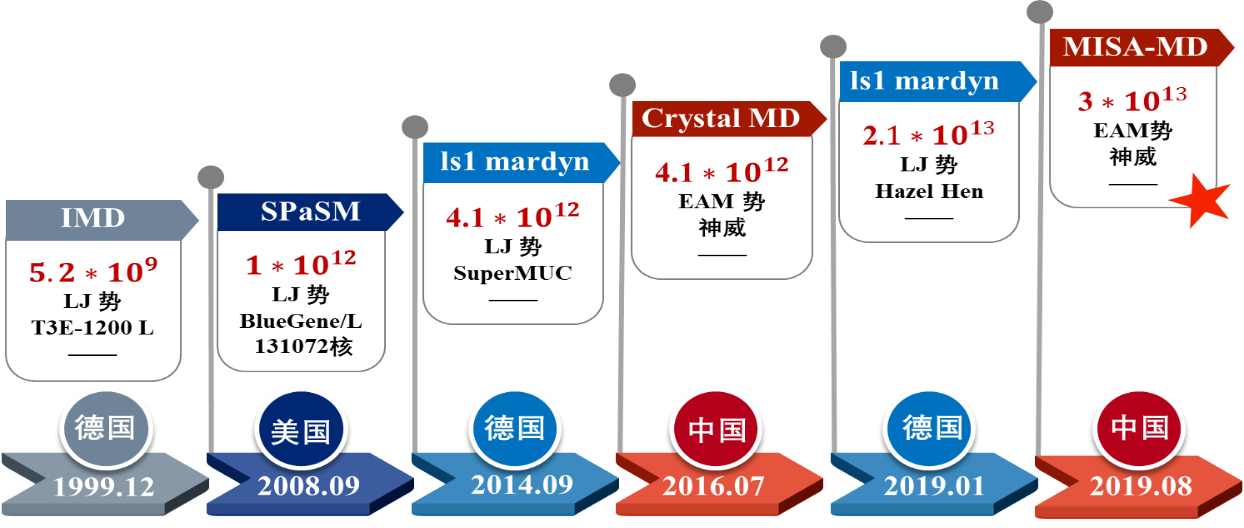Recently, a series of materials multiscale simulation software developed by our intelligent supercomputing fusion application technology team and China Academy of Atomic Energy Science has been officially open-sourced on the international open source code website Github. The team developed the MISA (MultI-scale Simulation of MAterial) series of material simulation software around the background of irradiation damage of metallic nuclear materials, facing the supercomputer architecture and massively parallel. It covers atomic scale and mesoscopic scale, and can realize coupled simulation at different scales. The open source software includes MISA-MD for atomic scale molecular dynamics simulation, MISA-AKMC for atomic scale dynamics Monte Carlo and MISA-SCD for mesoscopic scale cluster dynamics simulation.
The MISA-MD software supports cascade collision simulations and defect statistics at different PKA energies and orientations; it uses a complex EAM potential function to achieve 3*10^13 (trillion) atomic scale simulations using 8.5 million cores on the Shenwei TaihuLight supercomputer. scale simulations on the Shenwei TaihuLight supercomputer using 8.5 million cores, setting the current world record for the largest molecular dynamics simulation (Figure 1). Compared with the international classical LAMMPS program, it has significantly improved the resource utilization and efficiency, and the large-scale simulation on the Tianhe-2 supercomputer was awarded the "Tianhe Star" Excellent Application Award of the Guangzhou Supercomputer in 2020. The MISA-MD software also provides support for a variety of hardware architectures, including Shenwei processors, GPUs, DCUs and other acceleration hardware of Shenwei TaihuLight, further improving program performance. the MISA-AKMC software can support evolutionary simulations of null and gap double-leap mechanisms, and specifically optimizes parallel algorithms and communication strategies. The MISA-SCD software can support the simulation of the long-term evolutionary behavior of defect clusters in different systems (such as pure Fe, FeCu alloys, etc.) during irradiation, thermal aging and annealing, and obtain information on the composition, size and number density distribution of defect clusters, which can be directly compared with experiments to predict the macroscopic property changes of materials.

Fig. 1 MD simulation scale progress diagram
The series of software developed by the team was highly recognized by peers after it was announced as open source. The software has been used by more than 20 research institutions and university users, and MISA-MD software has also been included in the public software libraries of Dawning supercomputing centers in Beijing, Kunshan, Chengdu and Zhengzhou, and installed and deployed in supercomputing centers or computing centers in Shanghai, Kunshan, Shenzhen, Changsha, Zhengzhou, Chengdu and Beijing, covering Dawning, Tianhe and other supercomputing platforms.
Currently, the three material models software code and related documents are available on the website https://hpcde.github.io/p/open_source/.



